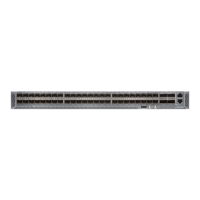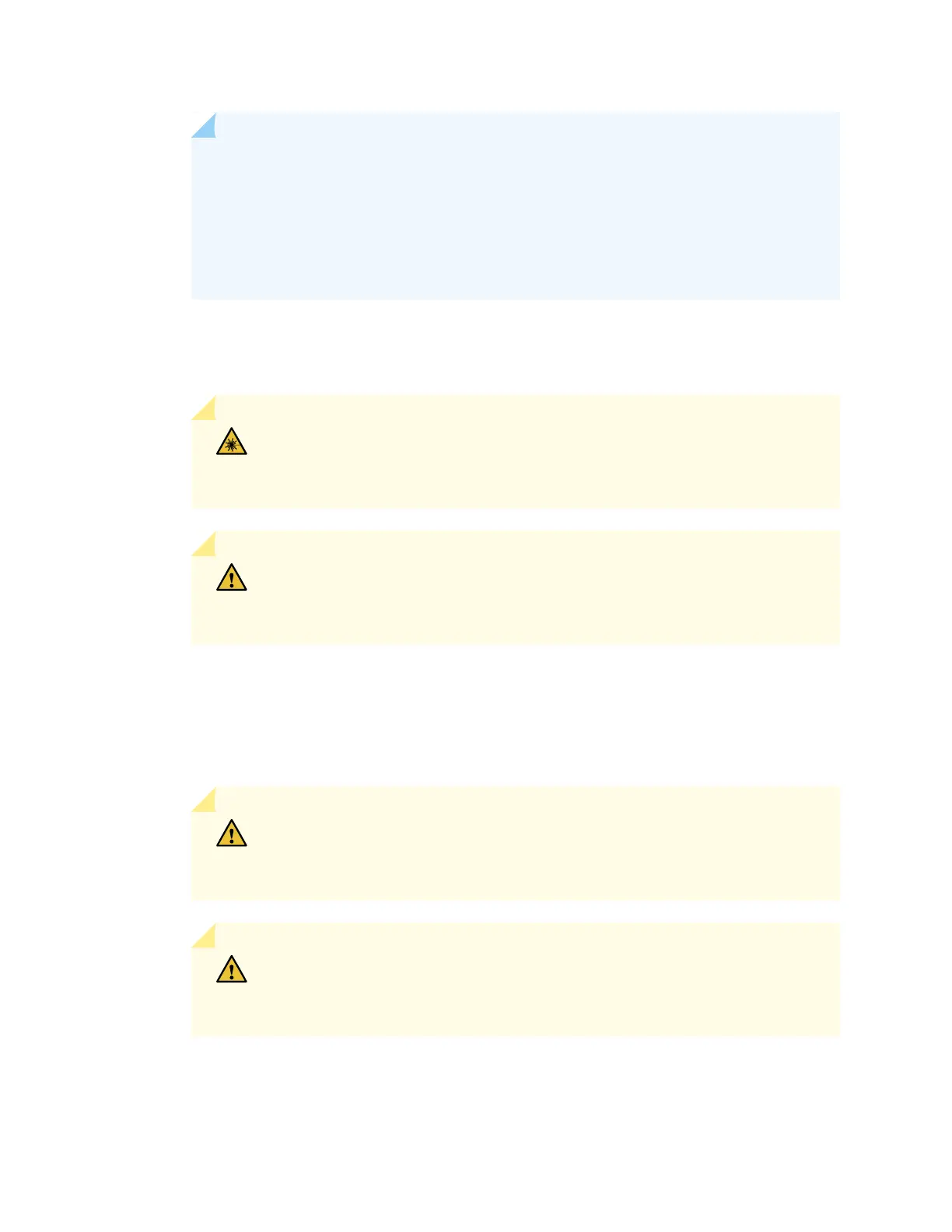NOTE: When inserting the C form-factor pluggable 2 (CFP2) transceiver, ensure that the
transceiver sits tightly in the port. You hear a distinct click sound when the latch locks
into the corresponding port. The latch must be fully engaged in the corresponding port
for the CFP2 transceiver to function properly. Failing to do so can result in loss of
connection. To verify that the CFP2 transceiver module is inserted properly, give a gentle
pull by grasping the sides of the module. The module should sit tightly.
5. Remove the rubber safety cap from the transceiver and the end of the cable, and insert the cable into
the transceiver.
WARNING: Do not look directly into a fiber-optic transceiver or into the ends
of fiber-optic cables. Fiber-optic transceivers and fiber-optic cable connected
to a transceiver emit laser light that can damage your eyes.
CAUTION: Do not leave a fiber-optic transceiver uncovered except when
inserting or removing cable. The safety cap keeps the port clean and prevents
accidental exposure to laser light.
6. Arrange the cable in the cable management system to prevent the cable from dislodging or developing
stress points. Secure the cable so that it is not supporting its own weight as it hangs to the floor. Place
excess cable out of the way in a neatly coiled loop in the cable management system. Placing fasteners
on the loop helps to maintain its shape.
CAUTION: Do not let fiber-optic cable hang free from the connector. Do not
allow fastened loops of cable to dangle, which stresses the cable at the fastening
point.
CAUTION: Avoid bending fiber-optic cable beyond its minimum bend radius.
An arc smaller than a few inches in diameter can damage the cable and cause
problems that are difficult to diagnose.
7. Verify that the status LEDs on the device indicate that the CFP2 is functioning correctly.
135

